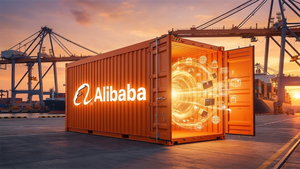
Global stock markets are currently navigating a tempestuous sea, battered by the twin gales of escalating geopolitical tensions in the Middle East and the persistent, protectionist currents of U.S. trade policies. As of December 2025, a potent brew of regional conflicts and significant tariff increases has brewed widespread headwinds, fostering deep uncertainty for corporate outlooks and sending ripples of volatility across international exchanges. This complex interplay of political and economic forces is not merely a short-term blip but signals a fundamental recalibration of global trade dynamics and corporate strategies, forcing a dramatic re-evaluation of supply chain resilience and investment decisions worldwide.
The immediate implications are stark: energy markets are on edge, supply chains face unprecedented disruptions, and investor sentiment remains fragile, prompting a flight to safe-haven assets. Corporations, from manufacturing giants to agricultural exporters, are grappling with increased costs, reduced profit margins, and the daunting task of re-architecting their global operations in an increasingly fragmented and unpredictable world. The confluence of these events paints a challenging picture for the global economy, raising the specter of slower growth and persistent inflationary pressures for the foreseeable future.
A Perfect Storm: Middle East Conflicts Intensify, U.S. Tariffs Soar
The current market turbulence is a direct consequence of a series of dramatic events unfolding across two critical spheres: geopolitics and trade policy. In the Middle East, a dangerous escalation of conflicts has reignited fears of regional instability, with profound effects on global energy supplies and maritime trade. Notably, in June 2025, an Israeli airstrike on Iranian nuclear facilities sent immediate shockwaves through oil markets, causing prices to surge, even if temporarily. The ongoing Houthi attacks in the Red Sea and the Suez Canal have already forced major shipping companies to reroute vessels around the Cape of Good Hope, adding significant time and cost to international freight, with marine insurance premiums skyrocketing by up to 300-400% in affected areas. The lurking threat of disruption to the Strait of Hormuz, a choke point for a quarter of the world's oil, looms large, holding the potential for an even more catastrophic surge in energy prices.
Simultaneously, U.S. trade policies have undergone a dramatic and aggressive transformation. Since April 2025, the implementation of what has been dubbed "Liberation Day" tariffs has seen the country's weighted-average tariff rate exceed 20%, a level not witnessed in nearly a century. These sweeping measures include substantial tariffs against key trading partners: Canada now faces 35% tariffs, Mexico 25%, and Vietnam 20%. The tariffs on Chinese exports have escalated even more dramatically, reaching an average of 57.6% across virtually all goods, pushing direct U.S.-China trade towards a projected collapse. This assertive stance has, predictably, triggered retaliatory tariffs from affected nations, further constricting global trade flows and exacerbating supply chain pressures.
The cumulative effect of these geopolitical and trade policy shifts is a severe dampening of global economic growth prospects. The Penn Wharton Budget Model projects that U.S. GDP could decline by approximately 6% in the long run, accompanied by a 5% reduction in wages, translating to a potential $22,000 lifetime loss for a middle-income household. Corporate earnings are under significant pressure, with many exporters anticipating declines in turnover ranging from 2-10% over the next year. This environment of heightened uncertainty and increased costs is forcing companies to fundamentally re-evaluate their global footprint and operational resilience.
Navigating the Shifting Sands: Identifying the Winners and Losers
In this volatile landscape, certain sectors and companies are better positioned to weather the storm or even thrive, while others face substantial headwinds.
On the potential winning side, defense contractors are seeing increased demand as nations bolster their military capabilities in response to heightened global instability. Companies like Lockheed Martin (NYSE: LMT) and Raytheon Technologies (NYSE: RTX) could benefit from increased defense spending, particularly given the escalating conflicts in the Middle East and broader geopolitical tensions. Similarly, oil and gas companies, such as ExxonMobil (NYSE: XOM) and Chevron (NYSE: CVX), often see their revenues surge when crude oil prices climb due to supply fears, though sustained high prices can also spark demand destruction. Furthermore, in times of uncertainty and inflation, gold mining companies like Barrick Gold (NYSE: GOLD) often perform well, as gold acts as a traditional safe-haven asset, demonstrating price stability and even record highs amid the current geopolitical stresses. Companies focusing on nearshoring or localizing their supply chains, a direct response to global disruptions, may also find themselves with a competitive advantage, attracting business from firms seeking greater reliability and reduced exposure to international shipping risks.
Conversely, a vast array of companies heavily reliant on global supply chains and international trade are facing significant challenges. The automotive sector, with its complex, multinational production networks, is particularly vulnerable. Manufacturers like Ford (NYSE: F) and General Motors (NYSE: GM) are contending with increased costs for imported components due to tariffs and higher shipping expenses, which inevitably trickle down to consumer prices or erode profit margins. Retailers such as Walmart (NYSE: WMT) and Amazon (NASDAQ: AMZN), which depend on efficient global logistics to stock their shelves and fulfill orders, are grappling with inflated import costs and potential product shortages. The research highlights that the agricultural sector is also suffering significantly, as retaliatory tariffs from trading partners restrict market access for U.S. agricultural exports, impacting companies that rely heavily on international sales. While some manufacturing sectors might initially see a temporary boost from import protection, the broader impact of tariffs and reduced global trade is projected to lead to a painful adjustment and a decline in employment within service and agricultural sectors.
Industry Reset: Broader Implications and Historical Echoes
These events are not isolated incidents but represent a significant acceleration of broader industry trends and carry profound implications for the global economic order. The most striking trend is the dramatic re-evaluation and reconfiguration of global supply chains. Companies are now prioritizing resilience over pure cost efficiency, a fundamental shift from decades of just-in-time manufacturing and lean logistics. This translates into strategies such as diversifying sourcing to multiple regions, actively pursuing nearshoring to bring production closer to consumption markets, and localizing supply chains to mitigate transport costs and political risks. The emergence of politically neutral trading hubs is also gaining traction as businesses seek stable environments.
The ripple effects are pervasive. The global economic slowdown is palpable, with forecasts indicating a potential 1% contraction in global GDP for 2025 and 2026. This environment generates stagflationary pressures – slower growth coupled with rising inflation – as increased import costs are passed directly to consumers. Many firms are delaying critical capital expenditures due to the unclear outlook on tariffs and regulations, stifling innovation and expansion. Regulatory and policy implications are also substantial; companies face an increasing burden of compliance with rapidly evolving tariff regulations, leading to potential fines and operational complexities. Central banks are closely monitoring this volatile situation. The U.S. Federal Reserve has maintained a cautious, wait-and-see approach to interest rates, while other central banks globally have already implemented cuts, reflecting diverse national economic conditions and policy responses to the unfolding crisis.
Historically, periods of heightened geopolitical tension and protectionist trade policies have consistently led to similar economic consequences. The oil shocks of the 1970s, triggered by Middle East conflicts, led to significant stagflation. The trade wars of the early 20th century also demonstrated how tariffs, intended to protect domestic industries, can often backfire, leading to retaliatory measures, reduced global trade volumes, and overall economic contraction. These historical precedents serve as a stark reminder of the potential for prolonged economic fragility when such powerful forces converge.
The Road Ahead: Adaptation, Opportunity, and Continued Vigilance
Looking ahead, the global economy and financial markets face a period defined by both challenges and the necessity for strategic adaptation. In the short term, continued market volatility is almost certainly guaranteed. The potential for further escalation in Middle East conflicts remains a significant risk, capable of sending further shockwaves through energy markets. Similarly, U.S. trade policies, including potential new rounds of tariffs or adjustments to existing ones, will continue to dictate trade flows and corporate planning. Businesses will need to remain agile, capable of rapid shifts in sourcing and production to navigate ongoing disruptions.
In the long term, these events are likely to accelerate a fundamental shift in the global trade architecture. We may see a continued move towards regionalization, where supply chains are concentrated within specific geographic blocs, fostering greater self-reliance and reducing dependence on distant, potentially unstable, suppliers. The focus on economic nationalism and the strategic importance of domestic production capabilities will likely intensify. This environment will also spur increased investment in technological solutions for supply chain management, including AI-driven predictive analytics and blockchain for enhanced transparency and resilience. Companies will need to pivot strategically, de-risking their supply chains, investing in automation to reduce labor costs and increase efficiency, and actively exploring new, less politically charged markets for both sourcing and sales.
For investors, this period presents both significant challenges and emerging opportunities. While the overall outlook is one of increased fragility and slower growth, sectors that demonstrate resilience, adapt swiftly, or benefit from the current trends (e.g., defense, renewable energy as an alternative to volatile fossil fuels, cybersecurity) may present compelling opportunities. The ongoing transformation of global supply chains will also create demand for logistics and technology solutions providers.
A New Era of Uncertainty: Navigating a Fractured Global Economy
In conclusion, the global financial markets are currently gripped by a dual crisis born from escalating Middle East conflicts and aggressive U.S. trade policies. This confluence of geopolitical and economic forces has ushered in an era of unprecedented uncertainty, marked by persistent market volatility, inflationary pressures, and a fundamental reordering of global supply chains. The immediate impact is evident in surging energy prices, disrupted maritime trade routes, and a noticeable slowdown in global economic growth, directly affecting corporate profitability and consumer purchasing power.
Moving forward, the market will remain highly sensitive to further developments in both arenas. Investors must acknowledge that the traditional models of globalized, cost-optimized supply chains are giving way to a new paradigm where resilience, diversification, and localized production are paramount. Businesses that can adapt swiftly to these evolving realities, through strategic pivots in sourcing, manufacturing, and market engagement, will be best positioned to thrive. What comes next is a test of adaptability for all market participants. Investors should vigilantly monitor geopolitical events, central bank policy responses, the evolution of trade agreements, and corporate earnings reports for signs of strategic adaptation and resilience. The lasting impact of this period will likely be a more fractured yet potentially more robust global economy, where risk management and strategic foresight become the ultimate competitive advantages.






